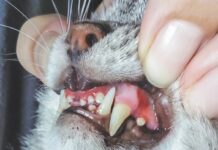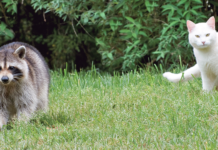It’s the pumpkin time of year, and your cat may enjoy sharing this traditional fall fruit! Pumpkin is an excellent source of potassium and contains calcium, iron, and vitamins A, C, and E. It has three to five grams of fiber per cup of pureed pumpkin and that fiber can help with constipation in your cat. The bulk stimulates the gastrointestinal walls to contract and can help move along simple obstructions, such as hairballs.
Paradoxically, pumpkin can help with diarrhea, especially large-bowel diarrhea. The fiber draws in excess fluid, firming up stools. If you want to use pumpkin as an aid for diarrhea or constipation, start with a half to one teaspoon, but be careful. You don’t want to tip your pet from one extreme to the other.
For a cat packing on some extra pounds, pumpkin can help in a weight-loss program. Adding a half to one teaspoon of pumpkin to her meal means fewer calories but a still satisfying meal, although you should discuss exactly how much with your veterinarian.
It’s important when considering feeding pumpkin to look for plain canned pumpkin at the supermarket. Check ingredients carefully. Pumpkin should be the only ingredient—not pie-filling canned pumpkin, which has spices and other items, such as sugar, added. Not only does your pet not need those additives, they may make them ill.
You can cook and puree your own pumpkin and then can or freeze it as well. Pumpkin ice cubes make nice treats for warm weather. Simply fill an ice cube tray with freshly pureed pumpkin or spoonfuls of plain canned pumpkin. Do not feed your Halloween jack o’ lantern post-holiday as it may have mold. Raw pumpkin is not recommended either.




